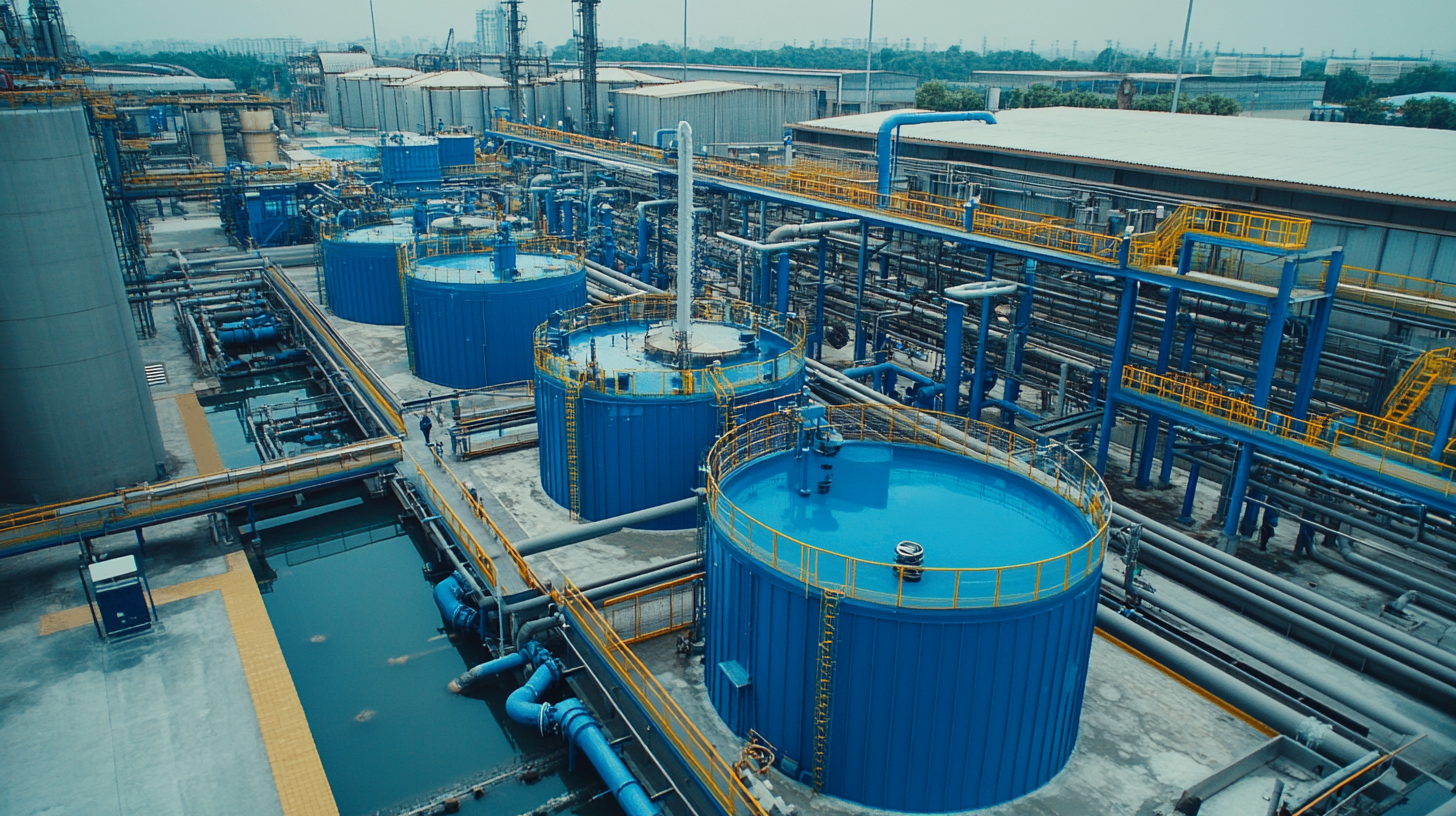In the face of escalating tariffs and trade tensions between China and the United States, the resilient growth of China's manufacturing sector stands as a remarkable testament to its adaptability and innovation. One notable area of advancement is in the production of specialized components such as the Water Mixing Valve, which plays a crucial role in various industrial and residential applications. As manufacturers in China continue to navigate challenges posed by tariffs, they leverage advanced technology and efficient production methods to enhance the quality and efficiency of their products. This blog will explore how the Chinese manufacturing landscape is evolving not only to withstand economic pressures but also to thrive by providing world-class solutions like the Water Mixing Valve, thereby reinforcing its position in the global market. Through strategic innovation and strong supply chain resilience, China's manufacturing sector is not just surviving but thriving, setting a benchmark for industries worldwide amidst geopolitical uncertainties.

The impact of tariffs on China's manufacturing sector has been profound, leading to significant shifts in production strategies and market dynamics. As trade tensions have escalated, many manufacturers have faced increased costs and supply chain disruptions. In response, China's manufacturing sector has demonstrated remarkable resilience by optimizing operations and investing in advanced technologies. This adaptability has allowed companies to maintain competitiveness despite the financial strain imposed by tariffs.
One notable area of innovation is in the development of best water mixing valve solutions. As demand for efficient and sustainable manufacturing practices grows, Chinese manufacturers are focusing on creating high-quality water mixing valves that enhance production processes while reducing waste. These solutions reflect not only a commitment to technology advancement but also an understanding of global market needs. As tariffs continue to shape the landscape, the ability of Chinese manufacturers to diversify their product offerings and enhance operational efficiency is crucial for sustaining growth in a challenging environment.

In the face of rising trade tensions and tariffs, Chinese manufacturers are adopting innovative strategies to ensure resilience and continued growth. The "US plus one" business model, which shifts reliance from China to alternative sources, poses significant challenges; however, it also offers an opportunity for Chinese firms to enhance their competitiveness. By embracing agile procurement strategies, manufacturers can adapt to changes in supply chains more efficiently, reducing risks associated with global trade disruptions.
Additionally, the shift to electric vehicles presents a landscape ripe for innovation. Chinese companies can leverage their manufacturing prowess to pivot towards sustainability, capturing domestic and international markets eager for electric vehicle technology. By focusing on advanced manufacturing techniques and fostering collaboration with local and global partners, Chinese manufacturers can not only mitigate the pressures of tariffs but also thrive in an evolving industrial environment. Such proactive measures are essential for navigating the complexities of contemporary trade and ensuring long-term growth in the manufacturing sector.
The water mixing valve market is witnessing significant growth, driven by innovative solutions that enhance efficiency and sustainability. Recent industry reports indicate that the global market for water mixing valves is expected to reach USD 3.5 billion by 2025, with a compound annual growth rate (CAGR) of 6.1% from 2020 to 2025. These innovations not only improve performance but also meet the increasing demand for energy-efficient systems in the manufacturing sector.
One prominent trend is the integration of smart technology into water mixing valves, allowing for real-time monitoring and adjustment of water temperatures. According to a 2022 analysis by Grand View Research, smart water management solutions can yield energy savings of up to 30%, significantly reducing operational costs for manufacturers while enhancing product quality. This advancement underscores the potential for companies to leverage technical innovations to withstand market challenges, including tariffs.
**Tips:** When selecting water mixing valve solutions, consider those with IoT capabilities for better efficiency and monitoring. Additionally, prioritize suppliers who emphasize sustainability in their manufacturing processes to align with growing environmental concerns. Staying ahead of technological trends can provide a competitive edge in an evolving market.

In the face of escalating tariffs, China's manufacturing sector has demonstrated remarkable adaptability, which is crucial for maintaining competitive advantage. According to the China Federation of Logistics and Purchasing (CFLP), manufacturing output in China increased by 5.6% year-on-year in the first quarter of 2023. This growth reflects the industry's ability to pivot strategies quickly to mitigate impacts from external economic pressures.
A key aspect of this resilience lies in the adoption of innovative solutions, such as advanced water mixing valve technologies. Comprehensive studies by MarketsandMarkets highlight that the global valve market is projected to grow from $71.4 billion in 2022 to $91.5 billion by 2027, showcasing a compound annual growth rate (CAGR) of 5.0%. This surge is indicative of manufacturers’ commitment to enhancing efficiency and sustainability, crucial for retaining market share amidst tariff challenges. By integrating cutting-edge technology and focusing on sustainable practices, manufacturers in China are not only surviving but thriving, exemplifying the significance of adaptability in fostering long-term growth and relevancy in a volatile market.
This chart illustrates the manufacturing growth rate in China from 2018 to 2023. Despite facing tariffs, China's manufacturing sector has shown resilience and adaptability, achieving varying growth rates over the years. The data shows the ability of Chinese manufacturers to maintain a competitive edge through innovation and operational flexibility.
China's manufacturing sector continues to showcase impressive resilience amidst global trade tensions and tariff pressures. According to recent reports, China's manufacturing output has not only rebounded post-pandemic but has also demonstrated a significant year-on-year growth of approximately 7.8% in early 2023, reaffirming its pivotal role in global supply chains. The strategic “Belt and Road Initiative” has further enabled China to enhance its trade routes, fostering deeper connections with emerging markets, particularly in Latin America and Central Asia.
As geopolitical uncertainties rise, experts emphasize the importance of adaptive strategies within China's manufacturing landscape. A study from the International Monetary Fund indicates that China has been enhancing technological investments, with spending on research and development rising by over 12% annually. This focus on innovation is crucial as it allows manufacturers to pivot and respond effectively to shifting market demands while maintaining competitive pricing.
Moreover, the prevailing dialogue regarding tariff negotiations between China and the United States reveals a mutual desire to stabilize trade relations, suggesting a potential easing of restrictions that could benefit both economies. As global dynamics evolve, China's manufacturing resilience, bolstered by strategic partnerships and adaptive commercialization, sets the stage for sustained growth in the face of adversity.
